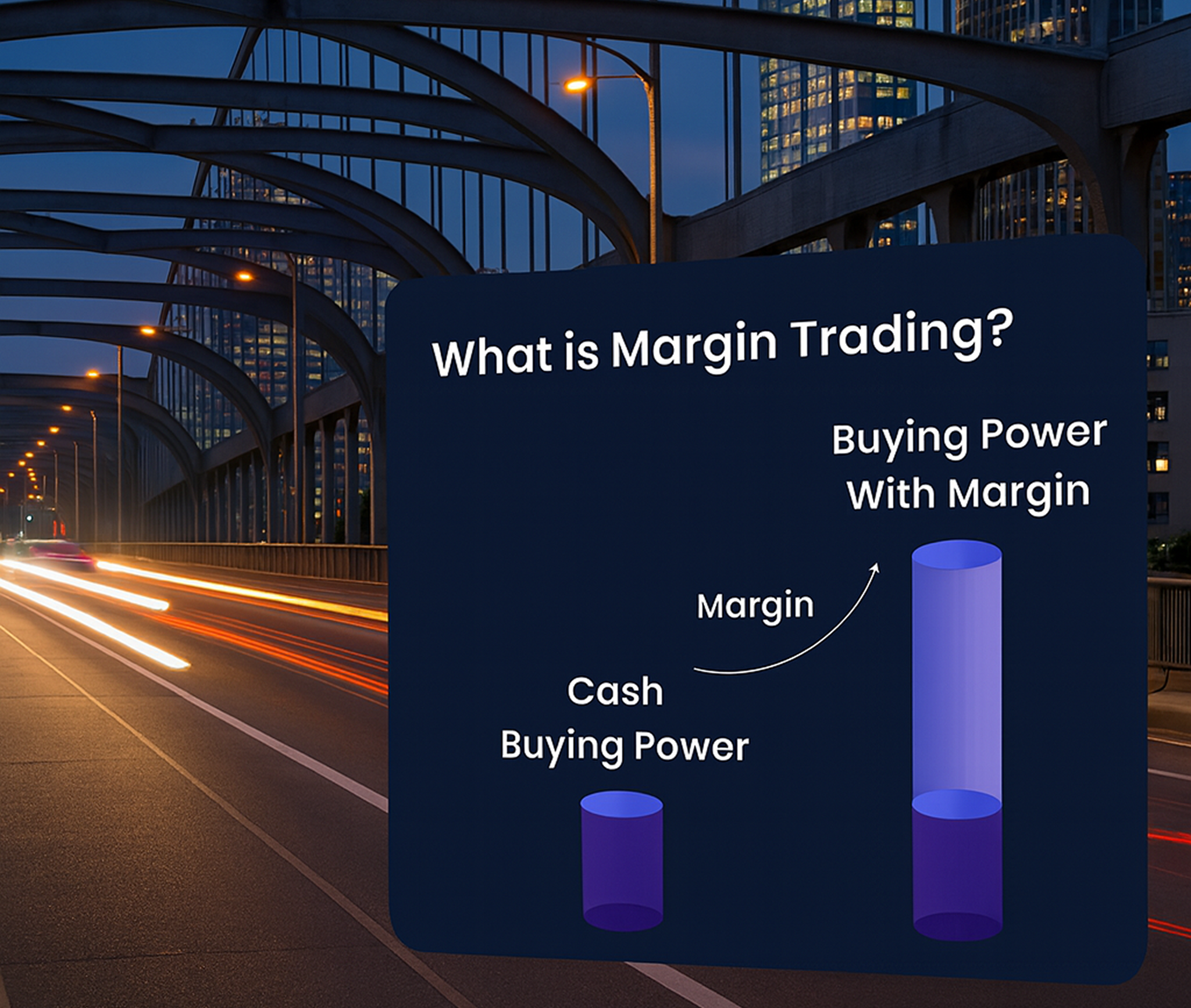Introduction: Understand Margin Accounts Before You Trade
A margin account allows investors to borrow money from their brokerage to buy securities, increasing their purchasing power. While margin trading can amplify gains, it also carries significant risks that can lead to heavy losses if not managed properly.
Understanding how a margin account works and when to use it can help traders and investors make more informed decisions. This guide will explain margin accounts, their advantages, potential dangers, and how to use them responsibly.
What Is a Margin Account?
A margin account is a type of brokerage account that enables investors to borrow funds from their broker to purchase stocks, bonds, ETFs, or other securities. The borrowed money acts as leverage, allowing investors to increase their exposure to potential gains and losses.
When using a margin account, the securities purchased act as collateral for the loan. Investors are required to maintain a minimum balance (known as the margin requirement) to avoid forced liquidation of their holdings.
How Does a Margin Account Work?
- Opening a Margin Account: Investors must apply for a margin account with their brokerage and meet minimum deposit requirements.
- Initial Margin Requirement: Investors must fund the account with a certain percentage of the total investment (often 50% of the total purchase price).
- Buying on Margin: Investors use borrowed funds to purchase securities, increasing their investment power.
- Margin Interest: The broker charges interest on the borrowed funds, which investors must repay over time.
- Maintenance Margin: Investors must maintain a minimum level of equity in the account. If the account value drops below the maintenance margin, a margin call may be issued.
Benefits of Using a Margin Account
- Increased Buying Power
Margin accounts allow investors to purchase more securities than they could with cash alone, potentially leading to higher profits. - Leverage for Greater Returns
By using borrowed funds, investors can magnify their gains when stock prices move in their favor. - Flexibility in Trading
Margin accounts can be used for a variety of investment strategies, including short selling and hedging. - Potential for Better Portfolio Diversification
Investors can use margin to buy multiple stocks instead of concentrating funds in one investment. - Ability to Take Advantage of Market Opportunities
Margin accounts allow investors to act quickly on opportunities without needing to wait for additional cash to settle in their accounts.
Risks of Margin Trading
- Amplified Losses
While leverage increases potential gains, it also amplifies losses. If a stock price declines, losses are magnified, and investors may owe more than their initial investment. - Margin Calls
If an account’s equity falls below the maintenance margin, the broker may issue a margin call, requiring the investor to deposit more funds or sell assets to cover the shortfall.
- Interest Costs
Borrowing money comes with interest charges that can erode profits if trades do not perform well. - Forced Liquidation
If an investor fails to meet a margin call, the broker has the right to sell securities in the account, often at unfavorable prices.
- Psychological Pressure
Investing with borrowed money can create stress and emotional decision-making, leading to impulsive trades. - Market Volatility Impact
A highly leveraged position can quickly become risky during market downturns, as rapid price swings can trigger margin calls unexpectedly.
How to Use a Margin Account Responsibly
- Understand Your Risk Tolerance
Before using margin, assess your risk tolerance and investment strategy. Only use leverage if you fully understand the potential downsides. - Start Small
New investors should limit their margin usage and avoid overleveraging their accounts. - Maintain a Cash Buffer
Always keep extra cash in your account to prevent margin calls and forced liquidations. - Monitor Your Account Regularly
Margin accounts require close monitoring to avoid unexpected losses and margin calls. - Have a Clear Exit Strategy
Plan when to take profits or cut losses before executing trades with borrowed funds. - Use Margin for Short-Term Trades
Since interest accrues on borrowed funds, margin is best used for short-term trades rather than long-term investments. - Stay Informed About Market Conditions
Market volatility can impact margin accounts more significantly than cash accounts, so staying informed is crucial. - Diversify Your Portfolio
Avoid putting all borrowed funds into one stock or sector—spread risk across different investments to mitigate potential losses.
Margin Account vs. Cash Account
| Feature | Margin Account | Cash Account |
|---|---|---|
| Borrowing Allowed | Yes | No |
| Interest Charged | Yes, on borrowed funds | No |
| Risk Level | Higher | Lower |
| Short Selling | Allowed | Not Allowed |
| Margin Calls | Possible | No |
| Investment Flexibility | Higher | Lower |
Who Should Use a Margin Account?
Margin accounts are best suited for experienced traders and investors with a high risk tolerance. They are commonly used by:
- Active traders who need extra buying power for short-term trades.
- Investors with strong market knowledge who understand risk management.
- Hedgers looking to protect portfolios from downside risk using advanced strategies.
- Seasoned investors who can handle market fluctuations and avoid emotional trading.
Conclusion: Is Margin Right for You?
A margin account can be a powerful tool for increasing buying power and leveraging trades, but it comes with significant risks. Understanding how margin works, monitoring positions closely, and using responsible strategies can help investors avoid major losses.
Before opening a margin account, carefully evaluate whether margin trading aligns with your investment goals and risk tolerance. If used wisely, margin can be a valuable addition to an investor’s toolkit.
Looking for more investing insights? Check out our other beginner-friendly guides on understanding market trends and how to place your first trade.
